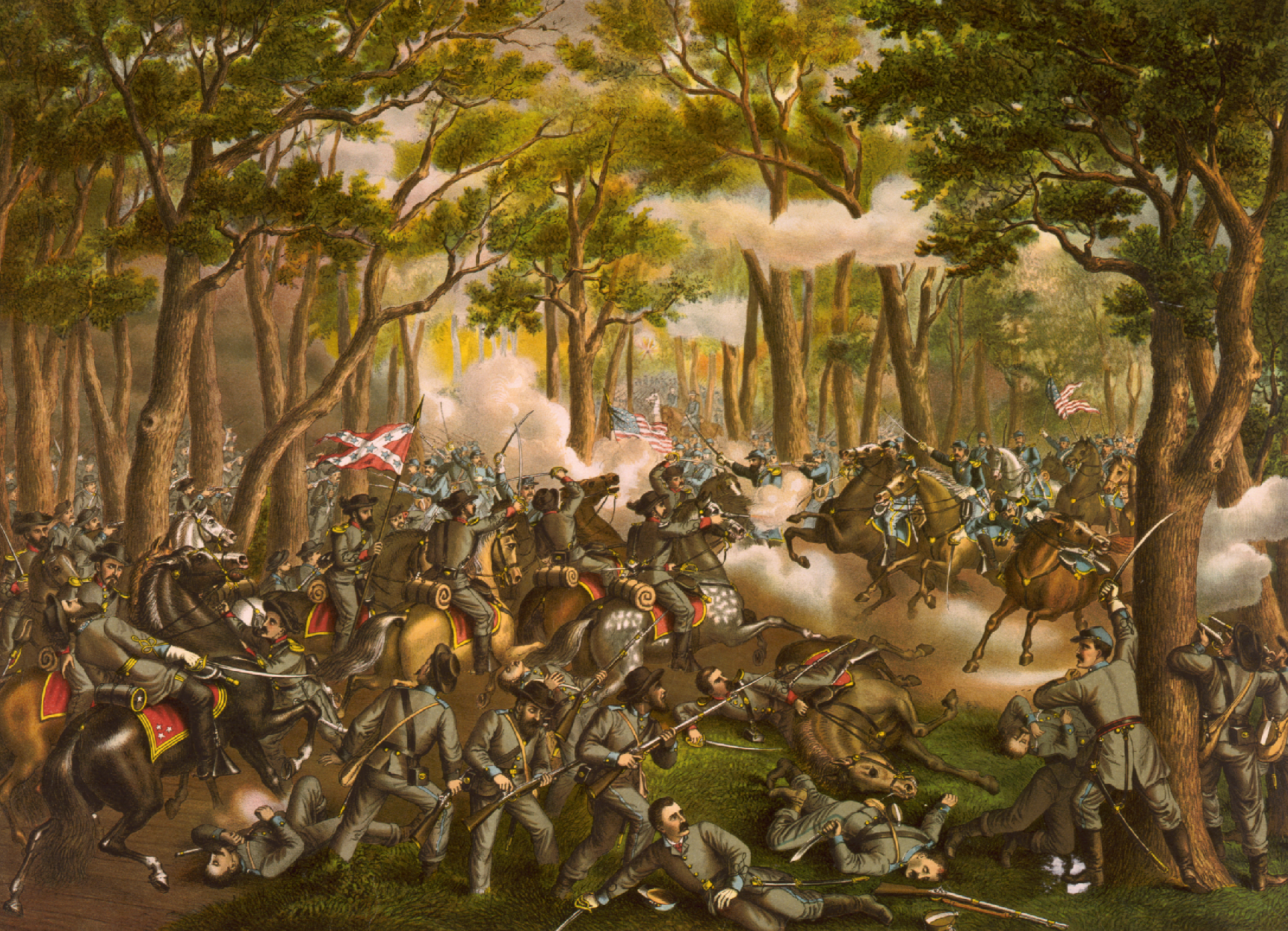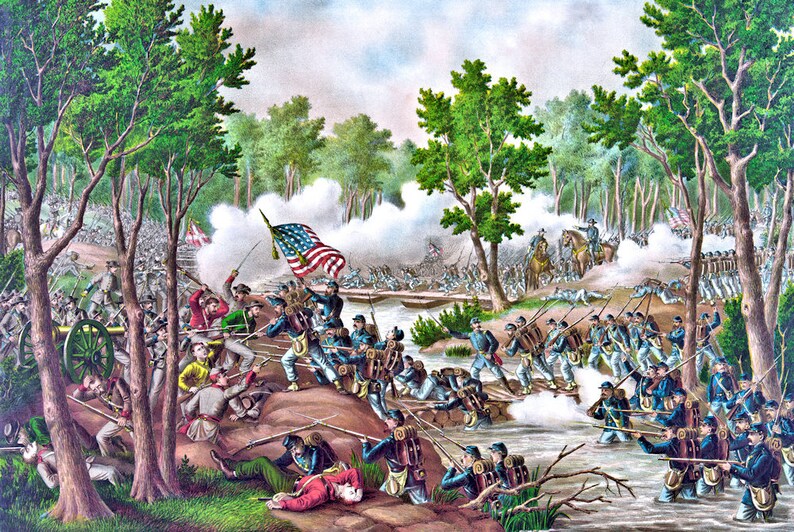When Ulysses S. Grant became commander of all Federal forces at the start of 1864, he chose to personally oversee operations in Virginia, practically commanding the Army of the Potomac (General George Meade was still the technical commander, causing tension among the Union leadership). The ensuing campaign, which lasted through May and most of June, was a constant, hellish series of battles that saw high casualty rates among both Federals and Confederates.
Battle of the Wilderness

The Wilderness is a wooded area. In fact it is part of the terrain over which the Battle of Chancellorsville was fought. Grant planned to get around Lee by quickly penetrating the dense forest. General Lee, however, blocked him on May 5 and a confusing and bloody battle ensued. It looked like the Federals would push through anyways on May 6, but reinforcements under General James Longstreet stopped them. The weather was dry and the vegetation caught on fire, burning many of the wounded alive. Tactically the Wilderness was a Confederate victory, but Grant simply marched his arm southeast and continued the campaign. His plan was to wear down Lee’s force through sheer attrition, as the North could much more easily replace its losses.
Kurz emphasizes the dense, wooded nature of the battle. The wounded and mounted general on the left is Longstreet who, like Stonewall Jackson almost exactly a year earlier, was shot by his own men in the same area. Longstreet was taken out of action, but would survive and return for the war’s final days. The most unusual feature of this lithograph is the sparring cavalry. Cavalry was present, but there was certainly no dramatic horseback battle in the midst of the woods.
Battle of Spotsylvania

Following the Wilderness, Grant attempted to get around Lee and create force him into battle under more favorable conditions. The Confederates outmarched and blocked him, building earthworks and other defenses centered at the crossroads at Spotsylvania Court House. On May 10 Federals under Colonel Emory Upton smashed through the Confederate breastworks at the Mule Shoe Salient with innovative attack tactics. A lack of support prevented a victory, but Grant was encouraged and launched more attacks over the next couple days. On May 12 there was a heavy rain and the soldiers fought in wet, muddy conditions. The Confederates scored a tactical defensive victory, but once again Grant simply tried to march around them again.
Kurz’s depiction of Spotsylvania is very odd. Instead of focusing on the main fighting at the Mule Shoe, he shows Federals crossing a stream under bright skies. There’s a pontoon bridge in the background. As far as I know, none of the actions around Spotsylvania match this image. Perhaps Kurz is merging the Federal crossing of the Po River with one of the assaults. The Confederates in the center of the lithograph are less uniform in appearance, wearing a myriad of colors. Overall this lithograph does not get as much representation in books because even for Kurz it is very far off from what happened.
Battle of Cold Harbor

Cold Harbor was a crossroads named after a local tavern (there was no harbor and it certainly was not cold in June 1864). It was just 10 miles away from Richmond and the Federals could not resist an opportunity to get at the Confederate capital. Union cavalry made it to the crossroads, but the rest of the army failed to come up in a timely manner and the Confederates pushed them back and established yet another formidable defensive line. The initial Federal assaults failed. On June 3 Grant ordered a major assault that was repulsed with staggering losses. Grant considered this battle his greatest regret. He reoriented the Army of the Potomac towards Petersburg, where it would once again be blocked. This time they would settle in for months of trench warfare.
Kurz depicts a brownish landscape. As he often does earthworks are represented by mounds of dirt rather than the sophisticated log-and-earth defenses that enabled a lopsided Confederate victory. If this represents any part of the battle it would be General Francis Barlow’s breakthrough on the Confederate right. It was the only taste of success on June 3. Kurz fails to get across how disastrous this day was for the Union and it even looks like it’s going to prevail here.
No comments:
Post a Comment